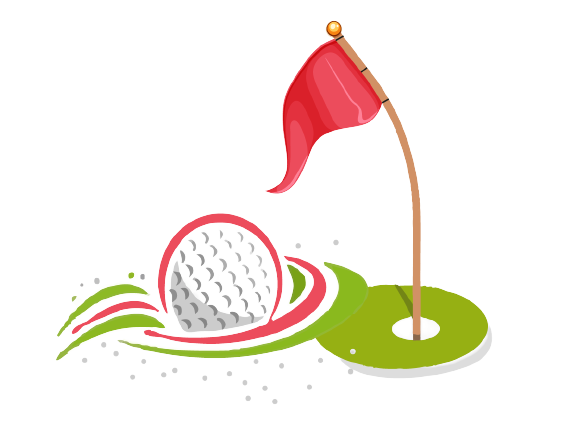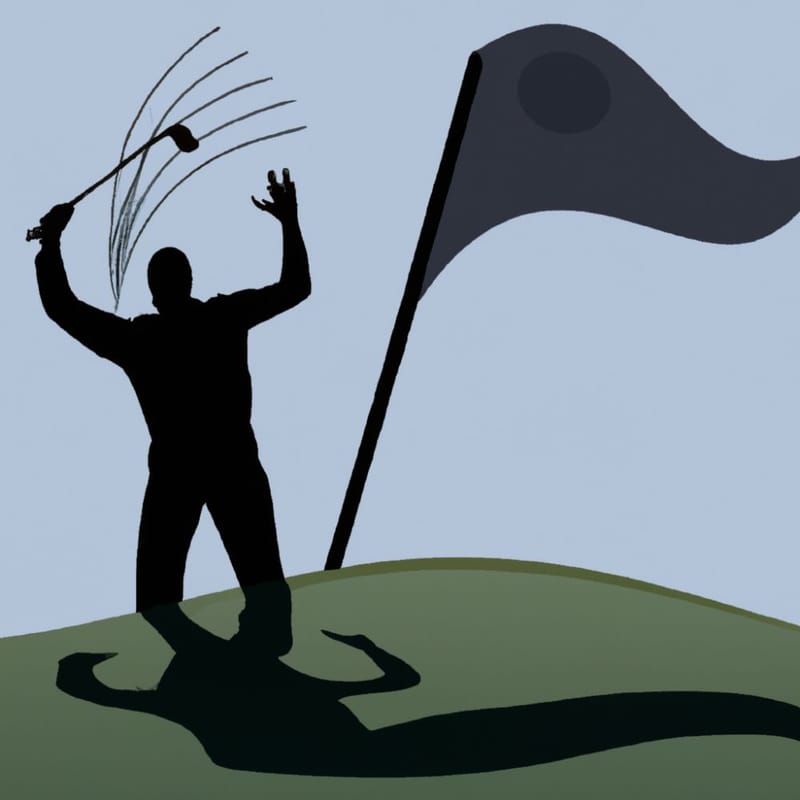Content Summary
Introduction
Are you having trouble reading golf greens? Do you have confidence when you place your putter behind the ball? Do you often find yourself second-guessing your line, wondering if you should be aiming higher or lower?
If so, you're not alone. Many golfers struggle with how to read a golf green, but it is a skill that can be learned with practice. Reading golf greens is important to your overall game.
There are a few things to keep in mind when reading greens: the speed of the green, the contours of the green, and the direction of the grain.
Speed of the green: The speed of the green is important to consider because it will affect how your ball rolls. If the green is fast, your ball will roll further than if the green is slow.
Contours of the green: The contours of the green can also affect how your ball rolls. If there are hills or valleys on the green, your ball will roll in that direction.
Direction of the grain: The grain is the direction that grass grows in. It can also affect how your ball rolls. If the grass is growing towards the hole, it will help your ball roll in that direction. However, if the grass is growing away from the hole, it will resist your ball and make it roll less far.
Types of greens - There are 6 major types of greens grass:
1. Bermuda Grass
2. Bent Grass
3. Fescue Grass
4. Zoysia Grass
5. Poa annua Grass
6. Rye Grass
By considering all of these factors, you can develop a better sense for how your ball will roll on any given green. With practice, you'll be able to read greens like a pro!
The Basic Skills You Need
In order to read greens, you need to understand what you're looking at. The first step is to take a look at the overall shape of the green. Is it a square, rectangle, or circle? Is it sloped in any direction? These are all important factors to consider.
How to Read Golf Greens
In order to improve your putts per round and holed putts percentage, you need to master the skill of reading greens. The first step is understanding the components of a golf green.
A typical green will slope from back to front, have different grass types in different areas, and undulations that create movement within your golf ball. Stand in front and behind the hole to get a good feel for how the ball will move when getting close to the hole. All these factors can impact your ball’s roll and break.
In order to properly read a golf green, you need to take all these factors into account. Start by finding the high side of the green — this is where your ball will break towards the hole.
Then, find the prevailing wind direction and consider how that will impact your putt. Finally, take a look at the speed of the green — is it fast or slow? All these factors will come into play when you make your putt.
With all this information in mind, it’s time to take a closer look at the greens. Use your eyes and feet to “read” the contours of the green. Walk around and take note of any undulations or changes in elevation. As you walk does it feel uphill or downhill? Which side of the hole would water run towards? The better you understand the greens, the better your putting will be.
How to Use a Golf Green Reading Chart
Golf green reading charts are books that show the different break patterns for various golf greens. By looking at the chart, you can learn how to read golf greens and predict how your ball will break.
Golf green reading charts are not essential for every golfer. If you are a beginner, it is probably best to focus on other aspects of your game. However, if you are an experienced golfer who wants to improve your ability to read greens, a golf green reading chart can be a helpful tool.
There are many different types of golf green reading charts available. Some are more comprehensive than others. The most important thing is to find a chart that is easy for you to use and understand.
To use a golf green reading chart, start by finding the section that corresponds to the hole you are playing. Then, find the area on the chart that shows the breaking point for that hole. The breaking point is where the ball will start to curve as it rolls down the green.
Once you have found the breaking point, trace your finger along the line until you reach the flagstick. The distance from the flagstick to the breaking point is the amount of break you can expect on your putt.
Golf green reading charts can be helpful for predicting how your ball will break on various types of greens. However, it is important to remember that every green is different and there is no guaranteed way to make an accurate prediction 100% of the time. Use a golf green reading chart as a guide, but be prepared to make adjustments based on your own experience and observations.
How to Read Golf Greens for Speed
Knowing how to read greens for putting can help you improve your game and lower your score. There are a few things you need to take into account when reading a green, such as the slope, grain, and firmness. By taking all of these factors into account, you can get a good idea of how fast the ball will roll and make your putt.
How to Use the Stimpmeter
The stimpmeter is a simple, yet effective, tool that every golfer should have in their bag. This guide will teach you how to use the stimpmeter to get a better understanding of green speed.
The stimpmeter is used to measure the speed of a green by seeing how far a ball rolls across the surface. To use the stimpmeter, simply place the ball at the end of the device and let it roll down the ramp. The distance that the ball rolls is then recorded and used to determine the speed of the green.
One of the most important things to understand about using the stimpmeter is that it only measures the horizontal speed of the ball. This means that it cannot take into account any changes in elevation, such as a hill or valley on the green. In order to get an accurate reading, you must make sure that the Stimpmeter is placed on a level surface.
Once you have your reading, you can compare it to other greens on the course or to similar greens that you have played in the past. This will give you a good idea of how fast or slow the current green is running. With this information, you can then make adjustments to your game accordingly.
So, next time you are out on the course, be sure to bring along your stimpmeter and use it to help improve your game! Stimpmeters are not widely available but you can learn to make one by watching this video:
How to Use the Plumb Bob Method
In order to develop a feel for the overall slope of the green, the plumb-bob method is both necessary and helpful.
This simple technique gives you a clear picture of the amount of break present on putts that are straight downhill, or breaking from left to right or right to left. You can also use the plumb-bob to check the severity of tier breaks on two-tiered greens. Simply stated, here's how the plumb-bob method works:
While standing behind your ball, hold a golf club directly over the top of it so that the grip end of the club points straight down toward the ground. Next, extend your arms so that they are in line with your shoulders and spine, and then close one eye. Doing so will help you to better focus on the grip end of the club and see the ball.
Still focusing on the grip end of the club, slowly lower it until your eye level is even with the ball. At this point, you should be able to see where the club is pointing - this will give you a good idea of how much break is present on the putting surface.
If there is a lot of break, you will see that the club is pointing well inside or outside of where you originally aimed it; if there isn't much break, it should be pointing relatively close to where you aimed it in the first place.
How to Use the Aiming String Method
One of the best ways to improve your lag putting is to learn how to read greens. Although there are many different ways to do this, one of the most effective is the aiming string method.
The first step is to find a good spot from which to read the green. This should be a spot where you can see both the high and low points of the green, as well as any slope in between. Once you have found a good spot, take a piece of string and tie one end around a golf tee.
Now, holding the other end of the string taut, aim it at the hole. Then, without moving the string, walk backwards until you reach the high point of the green. Mark this spot with another tee. Now, still holding the string taut, walk backwards until you reach the low point of the green and mark this spot with a third tee.
You should now have a straight line between all three tees. The tee in the middle is your aiming point, and the two outer tees show you where the high and low points of the green are. To read the break, simply look at where the line crosses the hole and make your putt accordingly.
This may seem like a lot of work, but it is well worth it if you want to improve your lag putting. Practice this method on different greens and in different conditions until you feel confident that you can read greens accurately.
Conclusion
As you can see, there are a lot of factors that go into how to read golf greens which then affects how you putt. By taking the time to learn all of these elements, you will be able to make much better decisions on the putting green and give yourself a better chance to score well.






